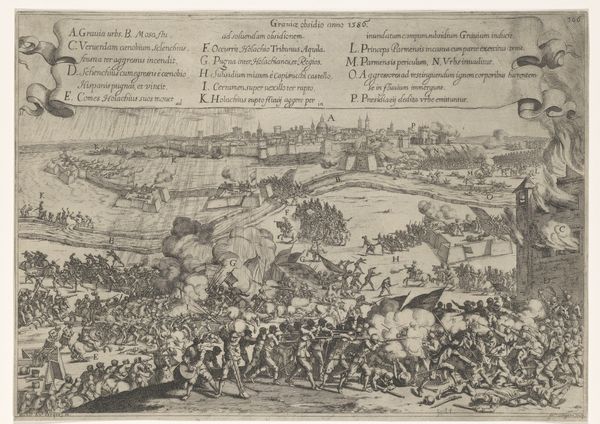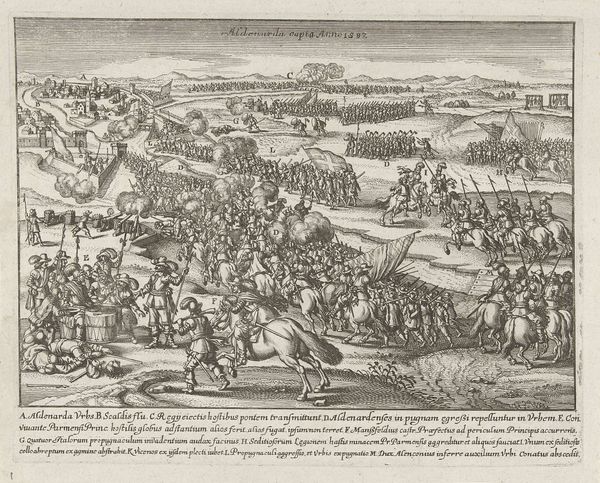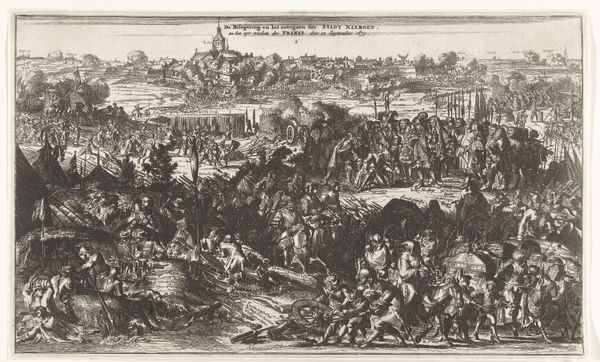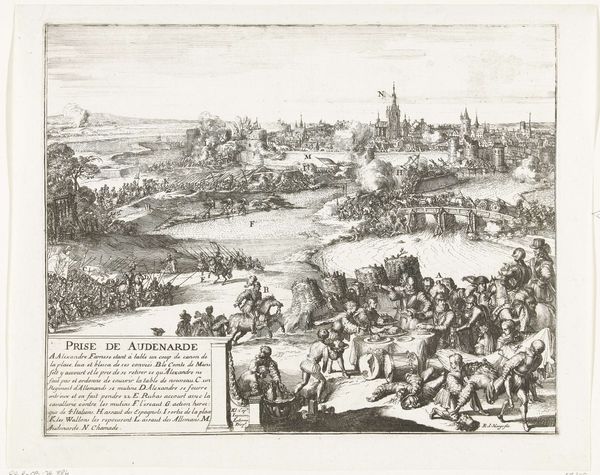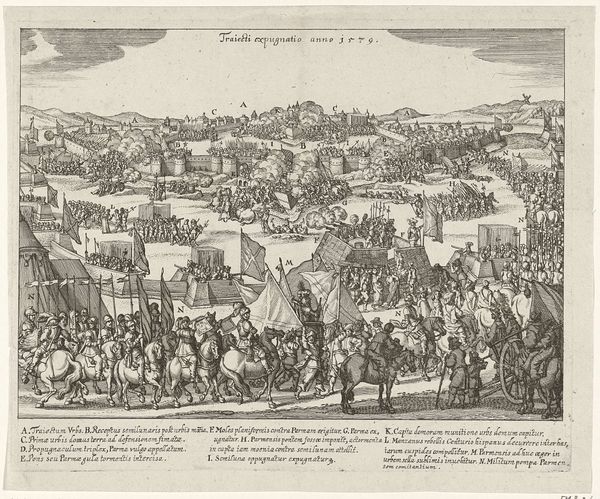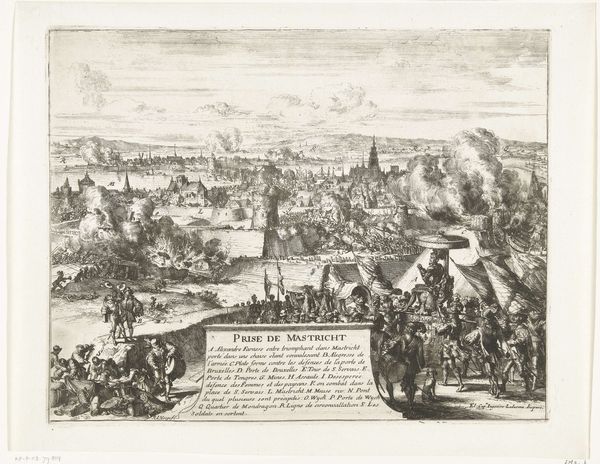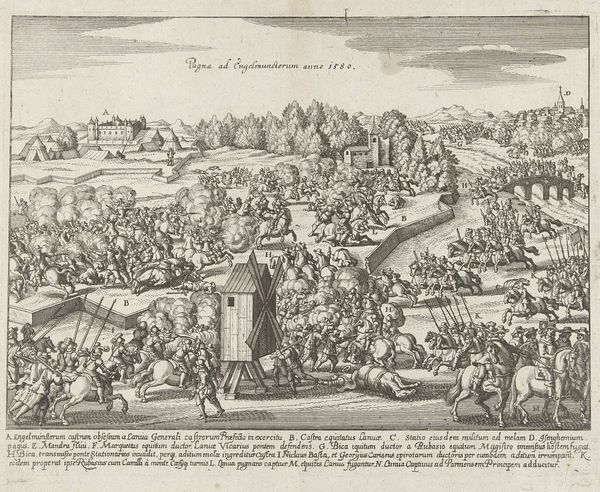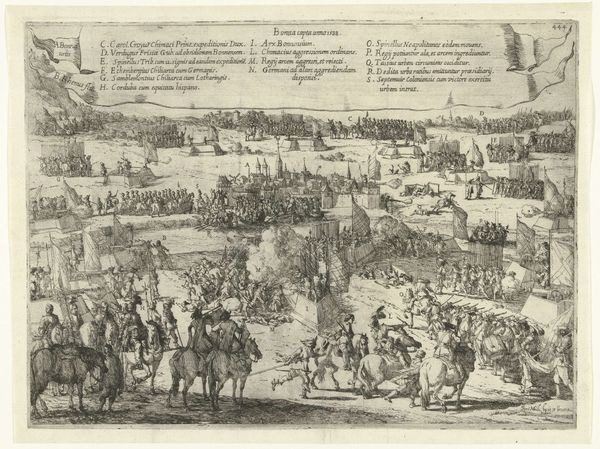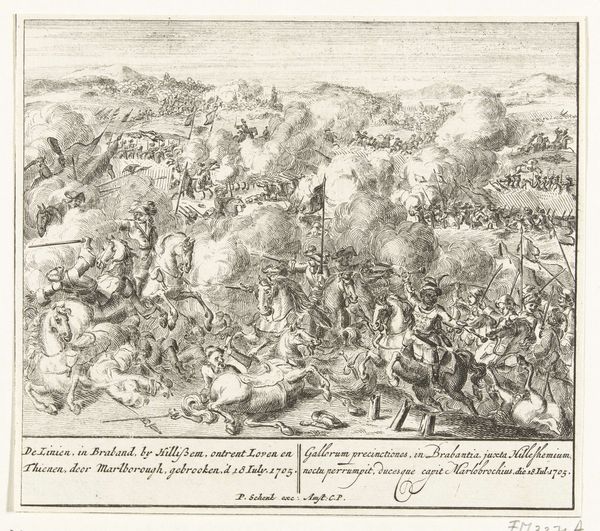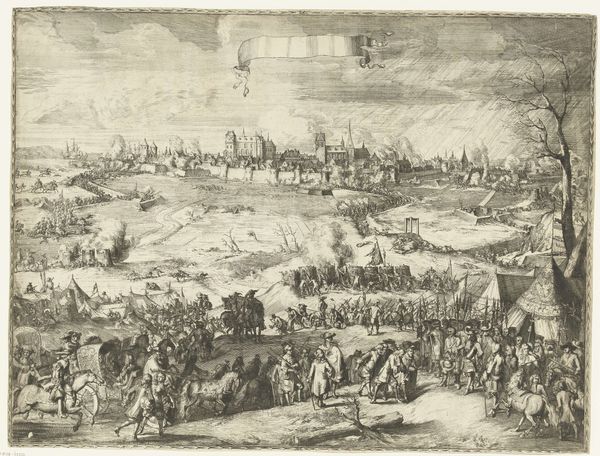
print, engraving
#
baroque
# print
#
cityscape
#
history-painting
#
engraving
Dimensions: height 302 mm, width 398 mm
Copyright: Rijks Museum: Open Domain
Curator: The energy practically vibrates off this print, doesn’t it? All these tiny figures embroiled in conflict. It’s quite dynamic. Editor: Indeed. Here we have “Siege of Maastricht, 1579,” an engraving crafted between 1645 and 1647, now residing at the Rijksmuseum. Jan Miel is credited with its creation. It is baroque in style. It presents not just a cityscape, but more accurately a history-painting capturing the titular siege. Curator: So, considering the date it depicts and the later production, this work reflects on the events with some temporal distance. Look at the dense, chaotic composition— the symbolism feels layered; an attempt to grapple with conflict rather than celebrate victory. How were sieges portrayed at this time? Editor: In broadsheets like this, sieges were typically grand spectacles meant to celebrate military strength. But notice how Miel seems to give equal attention to both sides, highlighting the violence, and possibly inviting reflection on the costs of war rather than pure celebration. These images acted as news media but also historical records that formed and propagated ideology, as the letters labeling areas and aspects indicate. Curator: That makes me think about the victims of war: both sides in any battle bear wounds and leave loved ones behind in mourning. The visual cacophony speaks volumes about collective trauma and unresolved disputes— perhaps Miel, nearly seventy years after the actual siege, sought to use it as a symbol of conflict’s deeper scars and continuity through visual symbol. Editor: Precisely! These depictions offer invaluable insight into contemporary opinions and beliefs around conflict and social trauma. It shows an emerging critical lens that allows the viewing public to assess collective memory. This becomes especially critical for audiences grappling with the tail-end of the Eighty Years' War. Curator: The work echoes in today's sociopolitical environment, reminding us how we respond to long-ago and contemporary wars and conflicts. It gives pause to think about symbols in the construction and commemoration of warfare in times of peace and healing. Editor: Well said! This siege captured in a 17th-century engraving presents us with a nuanced view of historical events.
Comments
No comments
Be the first to comment and join the conversation on the ultimate creative platform.
